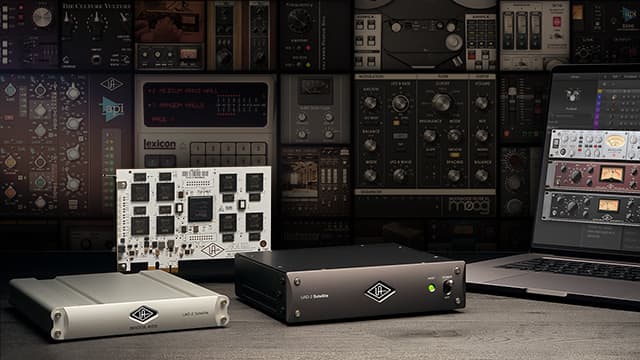
UA Blog
Analog Tape Recording Basics
These days, owning an analog tape machine is somewhat akin to driving a classic car, with ongoing maintenance, scarcity of parts, and exotic fuel (analog tape) that's expensive and hard to find. So while a handful of top studios still offer those classic spinning reels (and the engineers to maintain them), the good news for the rest of us is that there are now more convenient ways to achieve that classic magnetic sound.
1176 and LA-2A Hardware Revision History
We get occasional calls here at Universal Audio from people wanting to know what era some Universal Audio, UREI or Teletronix piece they bought on the vintage market dates from. So in this post, we're offering a complete revision history of two of our most popular reissues, the 1176LN Classic Limiting Amplifier and the Teletronix® LA-2A Classic Leveling Amplifier.
Understanding Audio Data Compression: MP3s, AACs, and more
Data compression schemes like MP3, FLAC, AAC, and other relatives have fundamentally changed music as we know it. Daniel Keller breaks down the different formats, and how data compression can change the music you make, and how you listen to it.
The Basics of Reverb
From Bill Putnam Sr.’s legendary United/Western echo chambers to modern digital units, artificial reverb is fundamental to modern recording. Learn how this remarkable effect came to be, and how its use — and abuse — can make or break your tracks.
Legendary Mix Engineer Michael Brauer Talks with Universal Audio
Michael Brauer has enjoyed an illustrious 30-year music career, mixing chart-topping albums by renowned artists including Coldplay, Aretha Franklin, Bob Dylan, and The Rolling Stones. Last month he nabbed the coveted Best Engineered Album Grammy Award for his work on John Mayer’s Battle Studies
UAD-2 Powered Plug-Ins Basics & FAQ
So, what exactly is the UAD-2 Powered Plug-Ins platform, anyway? The UAD-2 Powered Plug-Ins Platform is a range of very high-quality audio plug-ins, powered by dedicated hardware DSP accelerators (either PCIe/ExpressCard format or Firewire 400/800 format). UAD-2 plug-ins can be used in any VST, AU, or RTAS compatible audio software on Mac and PC.
Studio Acoustics & Soundproofing Basics
From better sound isolation to nuking resonant frequencies and other sonic anomalies that color what you’re hearing — rarely for the better — learn some practical tips to tune your room.
Audio Mastering Basics: Taking Your Music That Extra Step
No one will argue that digital technology has done much to empower musicians to take control over their recordings. Today’s artists are far less dependent on high-priced recording professionals, with many great-sounding projects having never even seen the inside of a recording studio.







